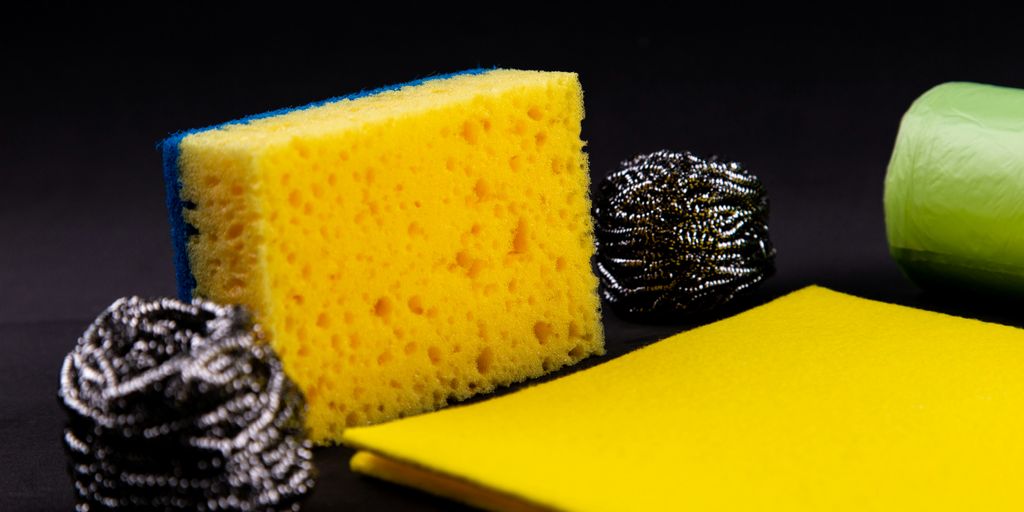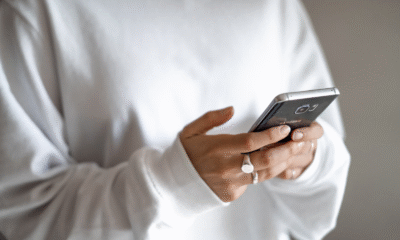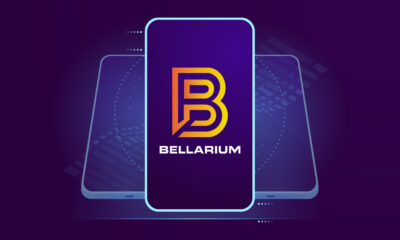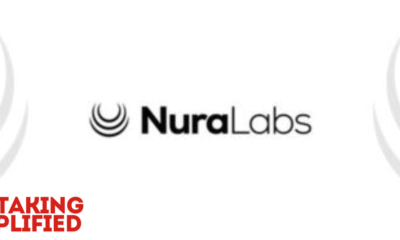Home & Family
10 Essential Cleaning Hacks for Bathroom Surfaces You Need to Try

Cleaning the bathroom can feel like a never-ending chore. It’s one of those tasks that just keeps coming back, right? But what if I told you that with a few simple hacks, you could make this process a lot easier? These ten cleaning hacks for bathroom surfaces will help you tackle grime and dirt without losing your mind. Let’s dive into these clever tricks that will save you time and energy!
Key Takeaways
- Baking soda and vinegar are great for tackling tough stains and odors.
- Vodka can be an effective cleaner for your toilet bowl.
- Lemon juice works wonders on mirrors and windows, leaving them streak-free.
- Clear nail polish can prevent rust stains from aluminum products.
- Running your exhaust fan during and after showers helps reduce moisture and mold.
1. Baking Soda

Okay, so who doesn’t have a box of baking soda sitting in their pantry? It’s like, the ultimate multi-tasker. But did you know it’s a rockstar when it comes to bathroom cleaning? I swear, it’s not just for baking anymore.
Baking soda is mildly abrasive, making it perfect for scrubbing without scratching surfaces. Plus, it’s a natural deodorizer, which is always a win in the bathroom. Let’s get into how to use it.
First off, for general cleaning, you can make a paste. Mix baking soda with a little water until you get a thick consistency. Slap that stuff on your bathroom cleaning agent like sinks, tubs, and even tile. Let it sit for a few minutes, then scrub away with a sponge or cloth. Rinse, and boom – sparkling clean!
For tougher stains, like those stubborn rings in the toilet bowl, try this:
- Sprinkle about a cup of baking soda into the toilet.
- Let it sit for at least an hour, or even overnight if you can.
- Give it a good scrub with a toilet brush and flush.
It works wonders! Seriously, give it a shot before you reach for those harsh chemical cleaners. You might be surprised at how well it works. Plus, you’re being all eco-friendly and stuff. Win-win!
2. Vinegar
Okay, so vinegar might not be the most glamorous cleaning product, but trust me, it’s a powerhouse in the bathroom. I remember when I first tried it, I was skeptical, but now I’m a total convert. It’s cheap, effective, and you probably already have some in your pantry. What’s not to love?
Vinegar’s acidity is what makes it so great for cutting through soap scum and hard water stains. Plus, it’s a natural disinfectant, which is always a bonus in a bathroom. I’ve even used it to freshen up my shower curtain liner – works like a charm!
Here’s how I usually use it:
- For general cleaning: Mix equal parts white vinegar and water in a spray bottle. Spray it on surfaces like your sink, countertops, and even the toilet. Let it sit for a few minutes, then wipe clean. For tougher stains, you might need to let it sit a bit longer.
- To clean showerheads: Fill a plastic bag with vinegar and secure it around your showerhead so the showerhead is submerged. Let it soak overnight, then remove the bag and run the shower to flush out any residue. This really helps to remove mineral buildup.
- For grout: Make a paste of vinegar and baking soda. Apply it to the grout lines, let it sit for a few minutes, then scrub with an old toothbrush. Rinse well. This is my go-to method for getting rid of stubborn grout stains. You can spray undiluted on tiles and grout for a deeper clean.
I’ve found that using vinegar regularly can really help to keep bathroom grime at bay. Just be sure to ventilate the area well, as the smell can be a bit strong at first. But hey, a little vinegar smell is a small price to pay for a sparkling clean bathroom, right?
3. Vodka
Okay, hear me out on this one. I know what you’re thinking: "Vodka? For cleaning?" But trust me, it works! Don’t go reaching for the Grey Goose, though. That cheap stuff in the plastic bottle that’s been sitting in your liquor cabinet since that one party? That’s the stuff you want. Vodka is a surprisingly effective disinfectant and deodorizer.
I usually pour about half a cup of vodka into the toilet bowl. Let it sit for about an hour, and then give it a scrub. It helps prevent those nasty rings from forming. You can also spray some vodka on your toilet seat and cover to disinfect them. It’s a great way to clean bathroom surfaces without harsh chemicals. Plus, you can use it to disinfect your toilet brush holder. Just pour a little bit in after each use to keep things sanitary. Who knew vodkas could be so versatile?
4. Lemon
Okay, so lemons. Who doesn’t love a good lemon? They’re not just for lemonade, you know. Turns out, they’re pretty awesome for cleaning too. I was surprised when I first heard about it, but after trying it myself, I’m a believer. The acidity in lemons makes them a natural disinfectant and deodorizer. Plus, they smell amazing, which is a huge bonus when you’re cleaning a bathroom. No one wants that chemical smell hanging around, right?
I’ve found that lemon juice works wonders on soap scum and hard water stains. Just cut a lemon in half and rub it directly onto the affected area. Let it sit for a few minutes, then scrub and rinse. You’ll be amazed at how easily the grime comes off. For tougher stains, you can mix lemon juice with baking soda to create a paste. Apply the paste, let it sit, and then scrub. It’s like a natural power cleaner!
Here’s a few ways I’ve used lemons around the bathroom:
- Cleaning shower doors: Cuts through soap scum like a champ.
- Shining faucets: Makes them look brand new.
- Freshening the toilet: A little lemon juice in the bowl works wonders.
And the best part? It’s all-natural and safe for your family and pets. No harsh chemicals to worry about. Plus, you can toss the lemon rinds down the garbage disposal to freshen that up too. Talk about multi-tasking! Speaking of multi-tasking, banks need to ensure seamless integration of their IT systems for smooth operations. Seriously, give lemons a try. You might be surprised at how well they work.
5. Hydrogen Peroxide
Hydrogen peroxide is something I always have on hand. It’s not just for cuts and scrapes; it’s a surprisingly effective bathroom cleaner. I usually buy the standard 3% solution – it’s cheap and works great. Just be careful when using it on colored surfaces, as it can have a bleaching effect.
Here’s how I use it:
- Toilet Bowl Cleaner: Pour about half a cup into the toilet bowl, let it sit for about 20 minutes, then scrub and flush. It helps get rid of stains and disinfects at the same time.
- Grout Cleaner: For stubborn bathroom grout, spray hydrogen peroxide directly onto the grout lines, let it fizz for a few minutes, then scrub with an old toothbrush. Rinse with water.
- Disinfecting Surfaces: I use it on sinks, countertops, and even the shower walls. Just spray, let it sit for a minute or two, and wipe clean. It’s a good way to kill germs without harsh chemicals.
I’ve even used it to get rid of mildew stains in the shower. It might take a few applications, but it’s way less harsh than bleach. Plus, it’s pretty affordable, which is always a win in my book.
6. Club Soda
Okay, so you’ve probably got some club soda lying around, right? Maybe from that party last weekend, or perhaps you just like the fizz. Well, guess what? It’s not just for drinks; it’s a surprisingly effective cleaner, especially for those annoying water spots on chrome fixtures. I was shocked when I first tried it!
Here’s the deal: the carbonation in club soda helps to loosen up grime and mineral deposits. It’s like a gentle scrub without all the elbow grease. Plus, it’s super cheap and you probably already have it. I mean, who doesn’t love a good cleaning hack that saves money?
Here’s how I usually do it:
- Pour some club soda onto a clean cloth.
- Wipe down the affected surface (faucets, showerheads, etc.).
- For tougher spots, let it sit for a few minutes before wiping.
- Rinse with water and dry with a clean towel.
Seriously, give it a shot. You might be surprised at how well it works. It’s definitely one of my go-to expert cleaning hacks for a quick bathroom refresh.
7. Clear Nail Polish
Okay, so this one might sound a little weird, but trust me, it works! I stumbled upon this hack when I was trying to figure out how to stop rust from forming on the bottom of my shaving cream can in the shower. Seriously, those rust rings are the worst.
Clear nail polish can be a lifesaver for preventing rust and keeping your bathroom fixtures looking newer for longer.
Here’s the deal:
- Identify the Problem Areas: Look for any metal surfaces that are prone to rusting, like the bottoms of shaving cream cans, metal legs of bathroom organizers, or even small chips in your towel rack.
- Clean and Dry: Make sure the surface is clean and completely dry before you start. This helps the nail polish adhere properly.
- Apply a Thin Coat: Use a clear nail polish (the cheaper, the better, honestly) and apply a thin, even coat to the area. You don’t want it to be goopy or thick.
- Let it Dry: Allow the nail polish to dry completely before exposing it to water or moisture. Usually, 15-20 minutes is enough.
I’ve also used this trick on small chips in my toilet cleaning accessories to prevent further damage. It’s like a little shield against the elements! Plus, it’s way cheaper than replacing everything when a little rust starts to show.
8. Air Can
Okay, so this one might sound a little weird, but hear me out. Those cans of compressed air you use to clean your keyboard? They’re surprisingly useful in the bathroom. I know, I know, it sounds crazy, but it works!
An air can is great for blasting away dust and grime from those hard-to-reach spots. Think about it: the crevices around your faucet, the corners of your shower door tracks, even the little nooks and crannies around the base of your toilet. These areas are notorious for collecting dust and mildew, and they can be a pain to clean with a cloth or brush.
Here’s why I like using an air can:
- It’s precise. You can direct the blast of air exactly where you need it.
- It’s quick. A few seconds of blasting, and the dust is gone.
- It’s satisfying. Watching all that gunk disappear is strangely therapeutic.
Just be careful not to spray the air can upside down, or you’ll get a blast of freezing liquid. Also, make sure to wear eye protection, because you don’t want any of that dust flying into your eyes. And maybe open a window for ventilation, just in case. You can also use home air quality monitors to ensure the air is clean after cleaning.
9. Toilet Brush
Okay, let’s talk about the unsung hero (or maybe villain?) of bathroom cleaning: the toilet brush. We all have one, but how many of us actually use it correctly? It’s not just about scrubbing away the obvious stuff; it’s about keeping the brush itself clean and preventing the spread of germs. I used to just rinse it under the toilet water (cringe!), but I’ve learned better.
Here’s the deal:
- After each use, flush the toilet with the brush still inside to rinse off any debris. This is a game-changer. Seriously.
- Next, secure the brush between the seat and bowl to let it drip-dry into the toilet. This prevents a soggy mess in the toilet brush holder.
- Once a week, disinfect the brush by pouring some bleach or toilet bowl cleaner over it while it’s in the bowl. Let it sit for a few minutes, then rinse thoroughly. This keeps the brush from becoming a breeding ground for bacteria.
And don’t forget to replace your toilet brush every six months or so. I know, it seems wasteful, but it’s way more hygienic in the long run. You can even find some not-hideous toilet brushes these days, so it doesn’t have to be an eyesore in your bathroom.
10. Exhaust Fan
Okay, so maybe this isn’t a cleaning hack in the traditional sense, but hear me out. Your bathroom exhaust fan is a silent warrior against mold and mildew. It sucks up all that moisture after a shower, preventing it from settling on your walls and ceiling. But, like any warrior, it needs maintenance!
A clean exhaust fan is a happy and effective exhaust fan. If you neglect it, dust and grime will build up, reducing its efficiency and potentially leading to bigger problems down the road. Think of it as preventative care for your entire bathroom.
Here’s why you should pay attention to your exhaust fan:
- Mold Prevention: Excess moisture leads to mold growth. A working fan helps prevent this.
- Odor Control: It helps remove unpleasant smells, keeping your bathroom fresh.
- Improved Air Quality: By removing pollutants, it contributes to better air quality in your home.
Cleaning your bathroom fan is easier than you think. I usually do it every few months, and it makes a noticeable difference. You can start by vacuuming the cover and fan to clean a bathroom fan to remove dust and grime. Next, use a damp microfiber rag to wipe down both surfaces for a thorough clean. Trust me, your bathroom will thank you!
Wrapping It Up
Cleaning your bathroom doesn’t have to be a huge hassle. With these 10 simple hacks, you can tackle the mess quickly and easily. Whether it’s using baking soda for tough stains or keeping things organized with trays, these tips can save you time and effort. So next time you’re faced with bathroom cleaning duty, remember these tricks. They can help you keep your space fresh and tidy without breaking a sweat. Happy cleaning!
Frequently Asked Questions
What is the best way to use baking soda for cleaning?
You can sprinkle baking soda on surfaces like sinks and tubs, then spray vinegar on top. Let it sit for a bit before scrubbing and rinsing.
How does vinegar help with cleaning?
Vinegar is great for cutting through grease and grime. Mix it with water in a spray bottle to clean tiles, counters, and mirrors.
Can I really use vodka to clean my toilet?
Yes! Pouring vodka into the toilet can help disinfect and clean it. Just let it sit for a while before flushing.
What can I use to clean my bathroom mirrors?
You can mix lemon juice with water or use club soda to clean mirrors for a streak-free shine.
How does hydrogen peroxide work for cleaning?
Hydrogen peroxide can be used to whiten grout and kill mold. Just mix it with baking soda for a powerful paste.
Why should I run my bathroom exhaust fan?
Running the exhaust fan helps reduce moisture, which can prevent mold and mildew from growing in your bathroom.
-

 Press Release6 days ago
Press Release6 days agoGlobal Compound Feeds and Additives Industry Report: Market Expansion and Competitive Insights to 2035
-

 Technology6 days ago
Technology6 days agoWhat to Know Before Switching Cell Phone Network Services in 2025
-

 Press Release4 days ago
Press Release4 days agoCrypto WINNAZ Launches First On-Chain Yield Engine for Meme Coins, Enabling 20x–300x Returns
-

 Press Release1 day ago
Press Release1 day agoBellarium ($BEL) Price Prediction: Could It Hit $5 by 2026?
-

 Press Release1 day ago
Press Release1 day agoWhy Alaxio (ALX) Is a Top Pick for Smart Crypto Investors
-

 Business11 hours ago
Business11 hours agoHow Managed IT Solutions Help Small Teams Compete at Enterprise Scale
















